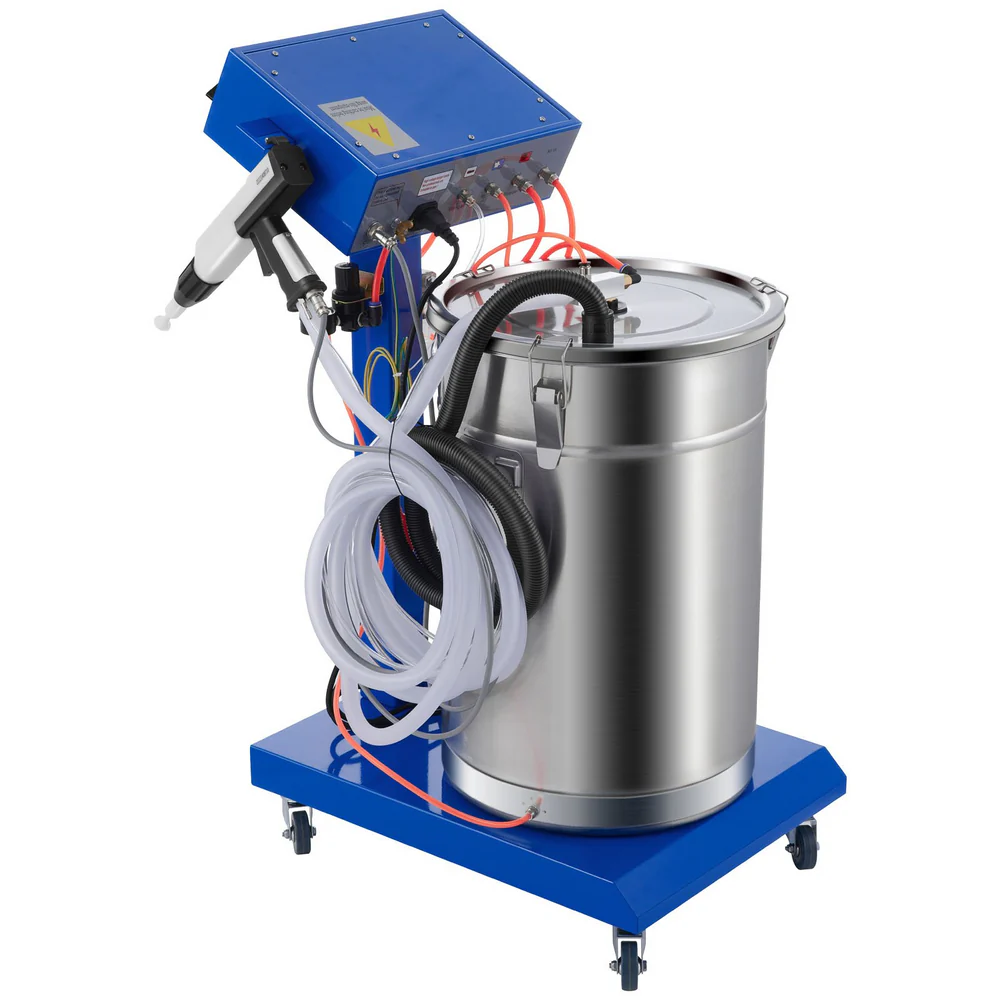Compliance talk doesn’t always make sparks fly, but in the powder coating world, it can mean the difference between smooth operation and serious fines. Staying in step with evolving safety and environmental rules isn’t just red tape—it’s smart business. For operators using a powder coating machine day in and day out, knowing how that equipment measures up matters more than ever.

Are Your Powder Coating Machines Aligned With NFPA Safety Protocols?
Fire safety doesn’t start with a spark—it starts with the equipment. The National Fire Protection Association (NFPA) outlines specific requirements for how a powder coating machine should be designed and operated to minimize fire risks. These rules cover everything from ventilation airflow to how overspray is collected and managed. If that sounds technical, it is. But skipping it isn’t an option. Dust accumulation, poor grounding, or improper enclosure setups can lead to flash fires, which are unfortunately common in systems not built to NFPA code.
Operators can’t just rely on the machine’s manual either. Regular inspections and updates are needed to make sure the unit still complies as standards evolve. A compliant powder coating machine should include proper grounding clamps, explosion-rated electrical components, and effective booth ventilation. These aren’t just suggestions—they’re the guardrails keeping production safe.
VOC Regulations and Your Machine’s Role in Compliance
Volatile Organic Compounds (VOCs) are tightly regulated, and while powder coatings are naturally low in VOCs, the machine still plays a big part in emissions control. Overspray recovery systems, booth filters, and airflow designs help limit particulate escape. If a powder coating machine isn’t maintaining clean exhaust or if filters are clogged and not replaced regularly, VOC-related compliance could become a problem.
Facilities operating in regions with stricter air quality standards may face fines or forced shutdowns if their equipment can’t meet the threshold. That’s why it’s important the machine’sdesign supports clean application and recovery. High-efficiency filters, enclosed booths, and well-sealed application units help a facility stay within VOC guidelines while maintaining output quality.
Compliance Standards for Powder Coating Machine Emissions Management
Overspray might look harmless floating through the air, but regulators see it differently. Emissions from powder coating machines must be properly captured, filtered, and contained to meet both federal and state-level environmental rules. Emissions management starts with the booth—how air moves, how powder is recirculated, and how excess product is recovered all factor into a machine’s emissions profile.
A high-quality powder coating machine will have smart airflow and robust capture systems. This not only limits pollutants but keeps the workspace safer. Operators should regularly check and document filter replacement schedules, airflow performance, and booth integrity. If any of those areas slip, compliance slips with them—and that’s when inspections start to turn up issues.
EPA Guidelines That Impact Powder Coating Machine Selection
The Environmental Protection Agency (EPA) doesn’t just look at the coatings being used—it also watches the tools doing the work. Powder coating machines that are outdated or not designed with environmental safeguards in mind can create compliance gaps. Booths with poor containment or equipment lacking proper airflow control can draw the wrong kind of attention from inspectors.
Choosing a powder coating machine that meets modern EPA standards requires knowing more than just the model number. It means understanding if the unit includes features like automatic filter cleaning, enclosed recovery systems, and minimal waste design. Machines that support sustainability aren’t just good for the planet—they’re better for the bottom line during inspections.
Does Your Powder Coating Machine Pass OSHA’s Latest Safety Checks?
The Occupational Safety and Health Administration (OSHA) takes machine safety seriously, especially with equipment that involves electrical systems, moving parts, and high-voltage electrostatic spray guns. If a powder coating machine lacks safety interlocks, emergency shut-offs, or proper enclosure, it may not pass the latest compliance checks.
Operators should know exactly what their machines are built with and how those features meet OSHA’s standards. Electrical grounding, air pressure regulation, and spark prevention aren’t optional add-ons—they’re required safeguards. Machines that skip these features might work fine on the surface but leave a shop vulnerable to costly safety violations.
Meeting Industry Certification Through Machine Design and Operation
In powder coating, certifications are more than a gold star—they’re proof the process and equipment meet high standards. Industry-specific certifications often include requirements related to cleanliness, emissions, and safety that the powder coating machine must support. This isn’t just about labels—it’s about proving the finish meets quality and safety expectations from start to finish.
The right machine can make certifications easier to earn. Automatic powder recovery systems, anti-static booth materials, and programmable settings that ensure consistent output help meet tight operational standards. For businesses trying to stand out in competitive markets, a machine that supports certification isn’t just useful—it’s essential.
Documentation Essentials for Powder Coating Machine Regulatory Audits
Audits aren’t something shops look forward to, but preparation pays off. Documentation around powder coating machine maintenance, filter changes, safety checks, and airflow tests is often required during inspections. Having this info readily available keeps the process quick and painless.
Logs should be kept in an organized way, tracking key maintenance routines and compliance checks. A binder of paperwork might seem old-school, but it can save a business from shutdowns or violations. The powder coating machine isn’t just the heart of the operation—it’s also the focal point of audit scrutiny. Keeping it—and its records—in top shape is non-negotiable.
FOLLOW US ON FACEBOOK
RECENT POSTS
TAGS
About The Memory Hole
You've reached TheMemoryHole.org! A diverse lifestyle blog with content on a variety of different topics to help you define and live the life you want to live! Thanks for stopping by!
Copyright © The Memory Hole. All rights reserved.







